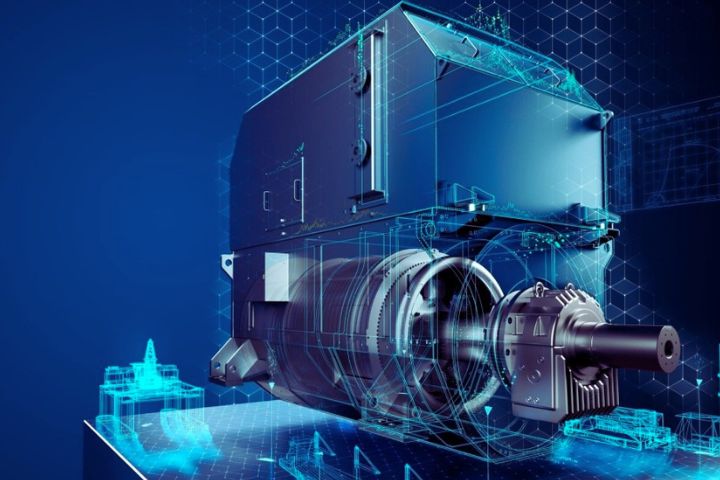How To Choose Generators?

Generators are equipment that transform mechanical energy into electrical energy. It is an essential emergency or on-demand power source where the electrical supply is non-existent or insufficient.
To choose the most suitable type, you must take into account the power needed to supply electricity to all the electrical devices that are going to be connected simultaneously. Do not forget that, being machinery with a motor, it has to be in a place with natural ventilation, without humidity and with easy access.
Table of Contents
Why Do You Need A Generator At Home?
Whenever you need electricity without resorting to the network, you will need a generator. Having one at home, especially in rural areas, is a good investment. These are some of its uses:
- Manage power tools in rural farms and areas far from towns.
- Install a lighting system in country houses or work sheds.
- Allow lighting or use of tools in homes under construction without an electrical connection.
- Replace and supplement your home’s electrical supply in the event of blackouts or network failures.
- Provide the necessary energy in a campsite.
The generators are specially designed to be used in places where there is no access to the network, where power outages are frequent or as support for installations based on photovoltaic solar energy.
Types Of Generators
According to the energy generation process they are classified as:
Inverter generators
They produce direct current energy and convert it to alternating current. What does this imply? That the power is of higher quality -because alternating current wastes less energy than direct current-, more stable -because it has no distortions or fluctuations- and safe -because it allows electricity to be supplied to standard or sensitive electrical devices with electronic boards, such as computers, video , air conditioning, television that need the current that reaches them to be of quality without voltage peaks.
Inverter generators offer a stabilized energy guarantee similar, at least, to that of conventional electrical current through the network. Inverter technology avoids voltage deviations greater than 1%; Thus, sudden changes in voltage will not cause damage to the devices
Conventional generator sets
They are the generators that are used to power tools and machines (for example, a drill, a concrete mixer or any other machine). They usually work (the most common) at 3,500 rpm (revolutions per minute) and have an AVR system, as a general rule, which has an automatic voltage regulator that serves to stabilize the electrical current and to protect equipment and tools. The added parts that allow energy to be regulated make these generators weigh more and emit more noise than inverters.
Common uses: power drills, (radial) grinders, welders, concrete mixers, lawn mowers, vacuum cleaners… Ideal for domestic use. Its operation is limited to a range of between 4 and 6 continuous hours, since the cooling of the motor is carried out thanks to a large fan that brings cold air to the motor.
Choose The Generator According To The Fuel
The choice is determined by power needs and usage, as well as the available budget.
Gasoline: suitable for all types of uses except welding. Suitable for the home, for motorhomes, small workshops and street vendors whenever you do not need to use it continuously. Ideal for use for a few hours and intermittently. Among its advantages are that it is an economic purchase option , that they are light and emit less noise . However, they heat up and must be allowed to cool down approximately every 4 hours and have a higher consumption than diesels.
Diesel (or diesel): it is recommended for intensive use and long days of use, even if used for days in a row. Recommended for use in the construction field and to power large machinery. Its consumption is medium (better consumption than gasoline models), it offers high performance and greater autonomy compared to gasoline models.
Gas: generator engines with this fuel source can be powered by Liquefied Natural Gas (LNG) or by Liquefied Petroleum Gas (LPG) through a tank. Gas generators are usually small in size and used in the home and to ensure electricity during short-term outdoor events. Among its advantages are the low noise they emit and that it is the most respectful option with the environment.
Number Of Phases: Difference Between Generators
Depending on the voltage of the current, electric generators are classified as single-phase and three-phase. Let’s see the differences between them:
Monophase
They are groups that are designed to supply energy at 220V. Its power is small. The single-phase power supply is recommended for common domestic uses and to connect energy “low consumption” devices, such as light bulbs, drills, grinders, refrigerators, grinders, pumps. They are designed to supply powers of 15-20 kVA maximum .
Triphasic
They are groups that are designed to supply energy at 380V. The three-phase power supply is recommended to supply power to appliances that require a higher current supply such as heating equipment, ovens or machines with a large power electric motor.
They can generate more power than single-phase ones, so they can be used with more powerful machinery. You do not need additional mechanisms to boot; In addition, they are less noisy and vibrate less than single-phase ones.
How To Get The Power Of The Generator Right?
There are two types of power to consider when it comes to generators. One is the power consumed by the generator itself, which is expressed in kW . And the other is the power that the generator outputs , which determines the power that it is capable of providing to operate the tools that you want to connect, and which is expressed in kVA .
To choose the power that needs to be supplied, it is advisable to make a list and add the powers of all the elements that you want to connect at the same time and divide the result of that sum by 100. That will be the useful power in kVA that you will have to add an extra (approximately 20%) because the appliances have a greater power requirement at the time of startup.
Also Read : Gallery App
Generator Models According To The Type Of Startup
- Manual and electric: they can be started with the rope or with the ignition key.
- Manual start: they can only be started with a rope since they do not have a battery for electric starting.
- Electric start: for large equipment whose working time is greater than 12 hours.
- Automatic: ideal for supplying light permanently without the need to start them.
- Remote Control: They are started via a remote remote control system.
Other Key Aspects
Weight: especially important if you need to move to carry out the work.
Silent: there are soundproof generators that stand out for the low decibels they produce, around 50 and 60 dB. They tend to be less bulky and their power is somewhat more limited than other noisier models.
Battery included: there are models that have a battery that powers the starter motor.
Hours counter: records the number of operating hours accumulated by the generator. This way you can keep track of its shelf life, its performance, when to refrigerate it, when to change the oil, etc.
Electronic regulation: regulates the engine speed to optimize the work of the generator. Ideal when you need to work with demanding loads.
Also Read : Benefits Of Robotics






